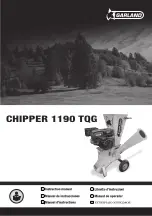
Recommended Maintenance and
Monitoring Programme
Baltimore Aircoil Company's ICE CHILLER
®
Thermal Storage Units and Thermal Storage Coils have been
developed for long, trouble-free service when installed, operated and maintained properly. To ensure optimal
performance and maximum equipment life for your ICE CHILLER
®
Thermal Storage Unit, it is important that a
regular inspection/maintenance program be developed and implemented. This manual is provided as a guide to unit
operation and establishing an effective maintenance program for Ice Thermal Storage systems.
Included in the manual are start-up and shutdown procedures, maintenance procedures and a schedule of
maintenance items and their recommended frequency for the ICE CHILLER
®
Thermal Storage Unit and its related
components. An illustration of the Thermal Storage Unit, with its major components identified, is provided in "ICE
Chiller®" on page 4. All inspections, maintenance and monitoring actions should be recorded in a cooling system
logbook.
As part of your maintenance record, it is advisable to have a copy of the unit's certified drawing available for
reference during inspection and maintenance. If you do not have a copy of this drawing, or need further information
about the unit, contact your local BAC Service provider. You can find name, e-mail and phone number on the
website www.BACService.eu.
Checks and adjusments
Start-Up
Monthly
Quaterly
Every 6 Months
Annually
Shutdown
Operating Level
X
X
System Charging
X
Inspections and Monitoring
Start-Up
Monthly
Quaterly
Every 6 Months
Annually
Shutdown
General condition
X
X
ICE CHILLER
®
Tank
X
X
ICE CHILLER
®
Water
(1)
- Quality
- Level
X
X
X
X
Ice Thickness
X
X
Coil
X
X
ICE LOGIC™ Ice Quantity controller:
- condition of sensor
X
X
Refrigerant:
- Glycol quality
X
Cleaning procedures
Start-Up
Monthly
Quaterly
Every 6 Months
Annually
Shutdown
Disinfection
X
X
X
Notes
1. Water Treatment and auxiliary equipment integrated in the cooling system may require additions to the table
above. Contact suppliers for recommended actions and their required frequency.
2. Recommended service intervals are for typical installations. Different environmental conditions may dictate
more frequent servicing.
3. When operating in ambient temperatures below freezing, the unit should be inspected more frequently.
W W W . B A L T I M O R E A I R C O I L . E U
2



































